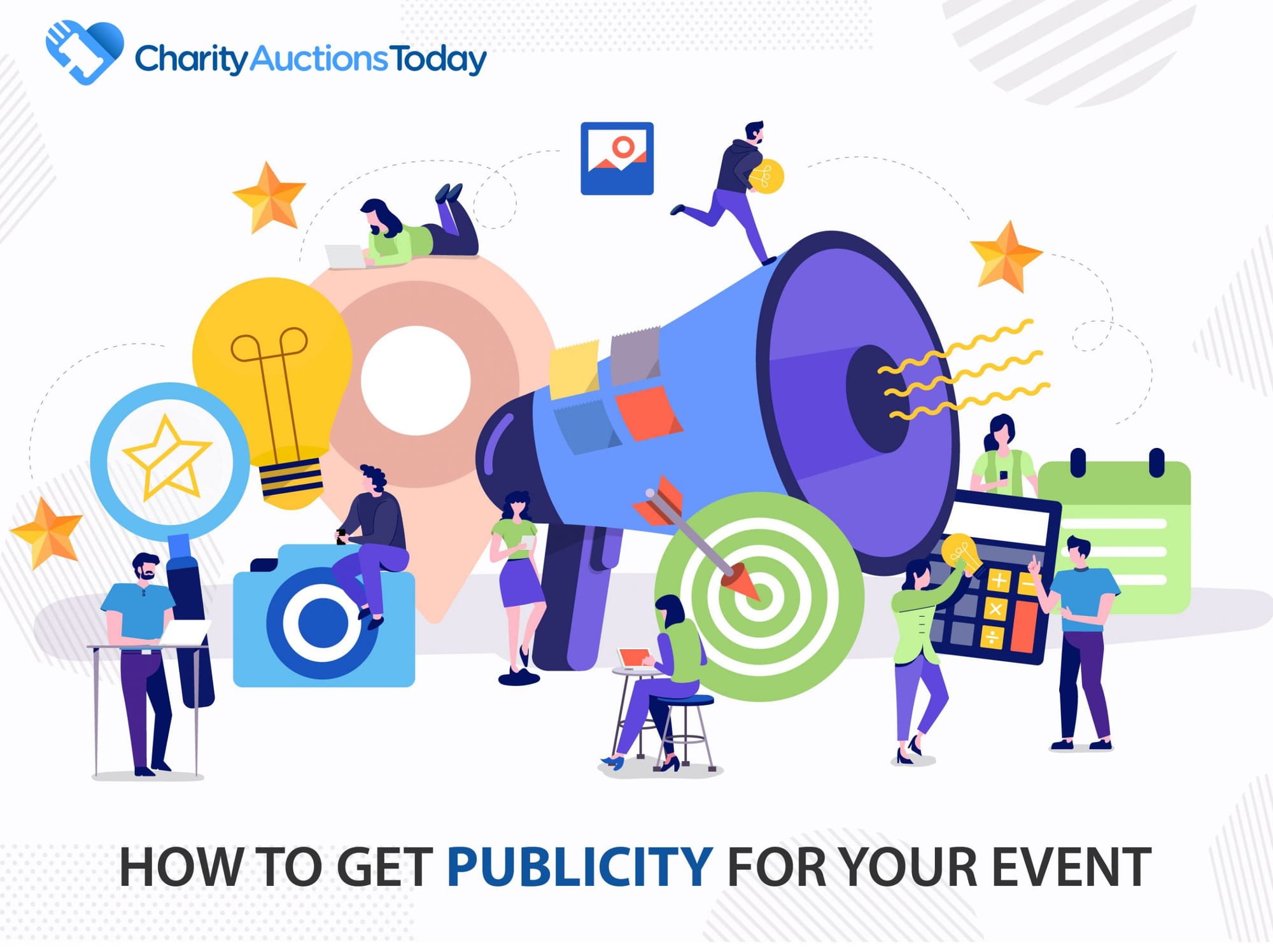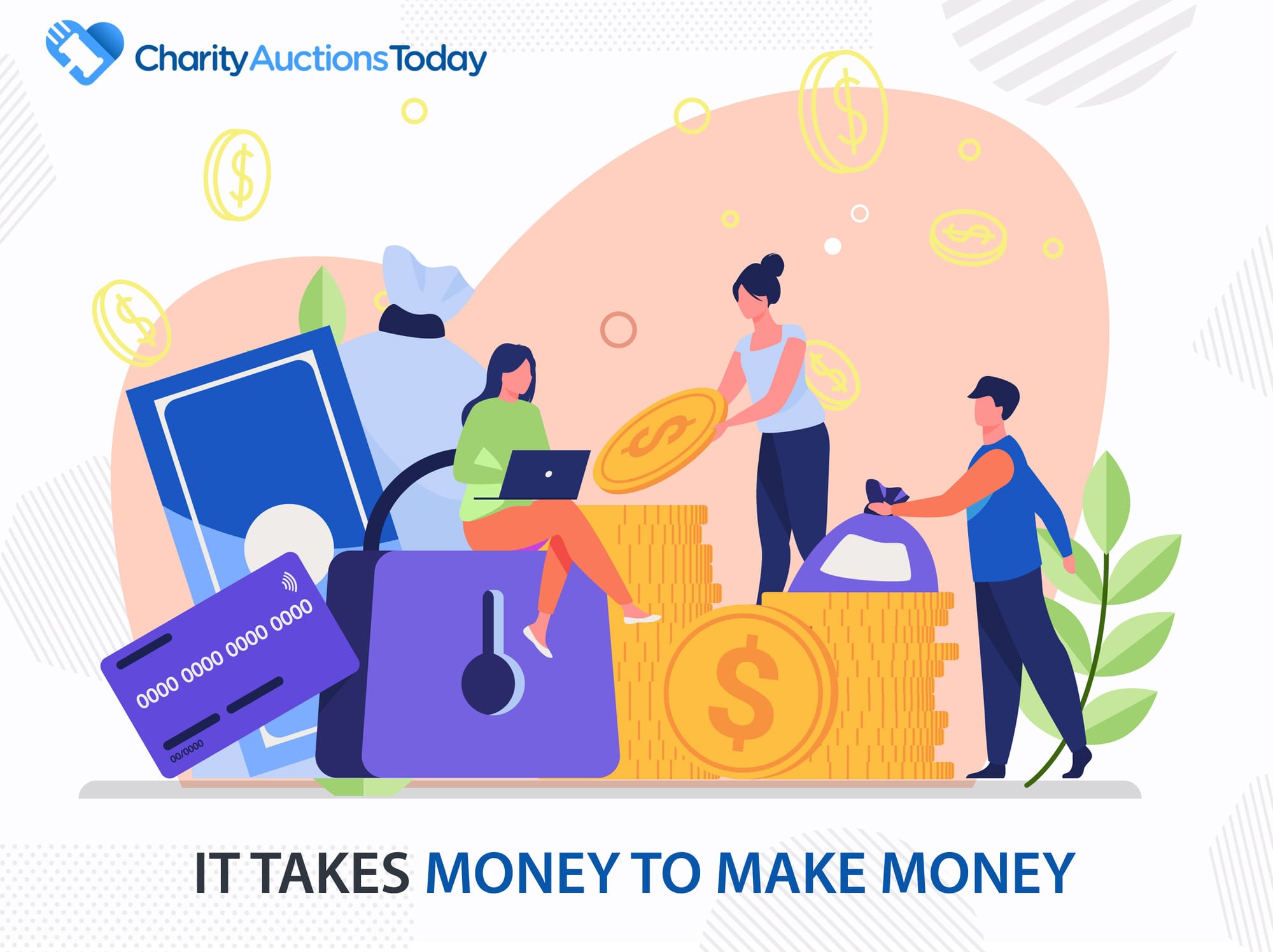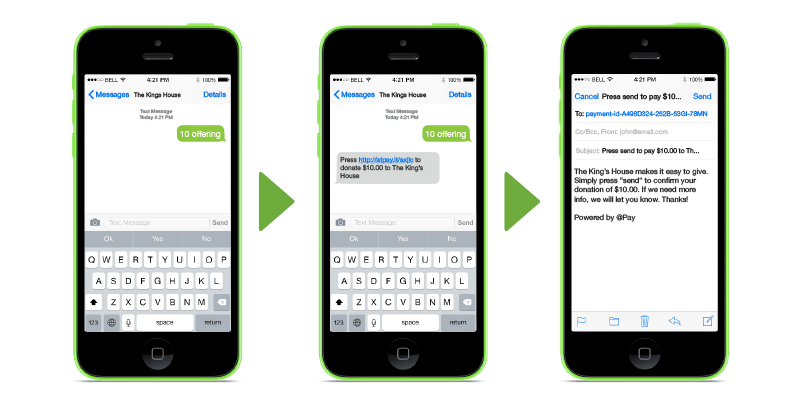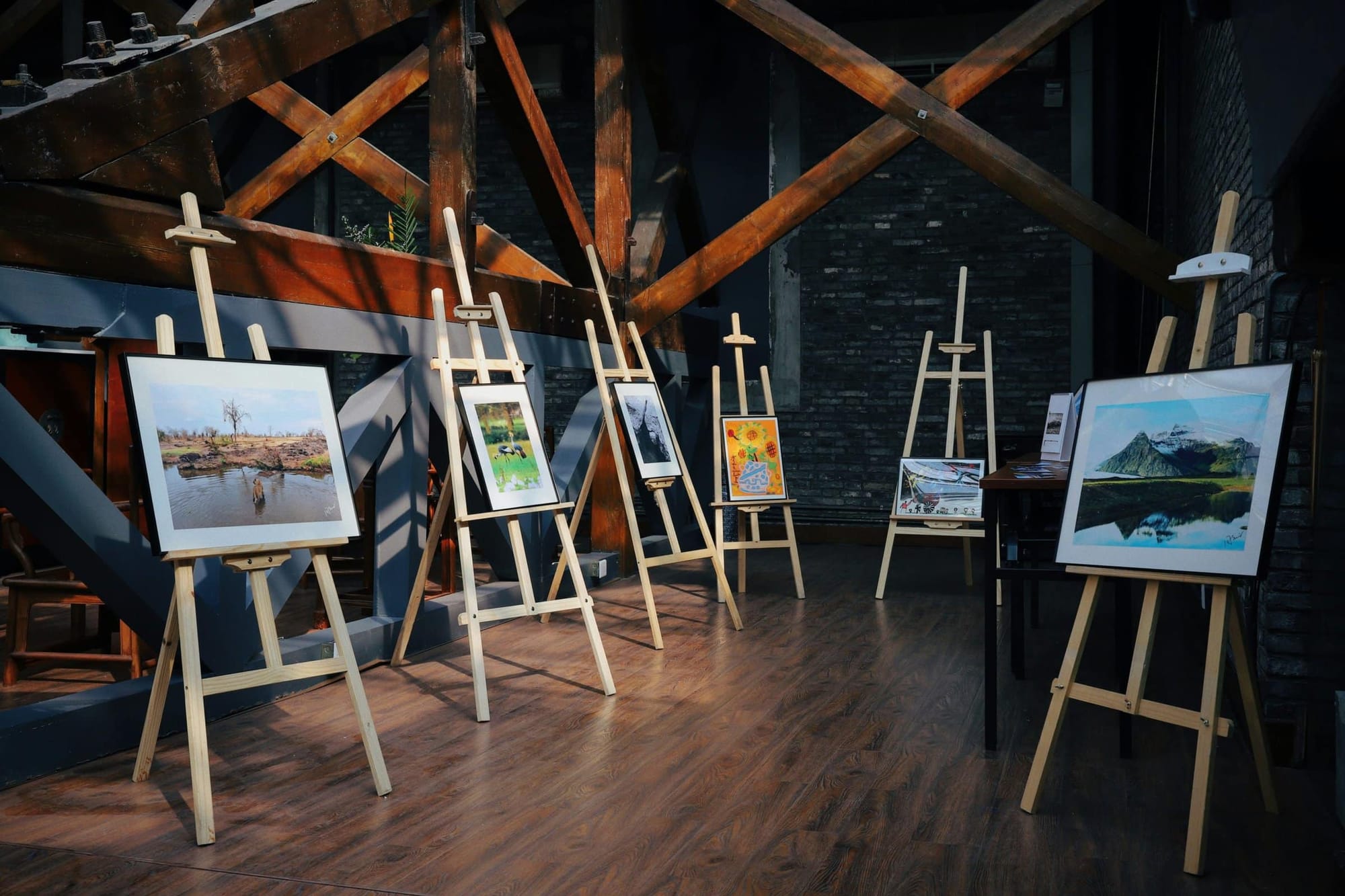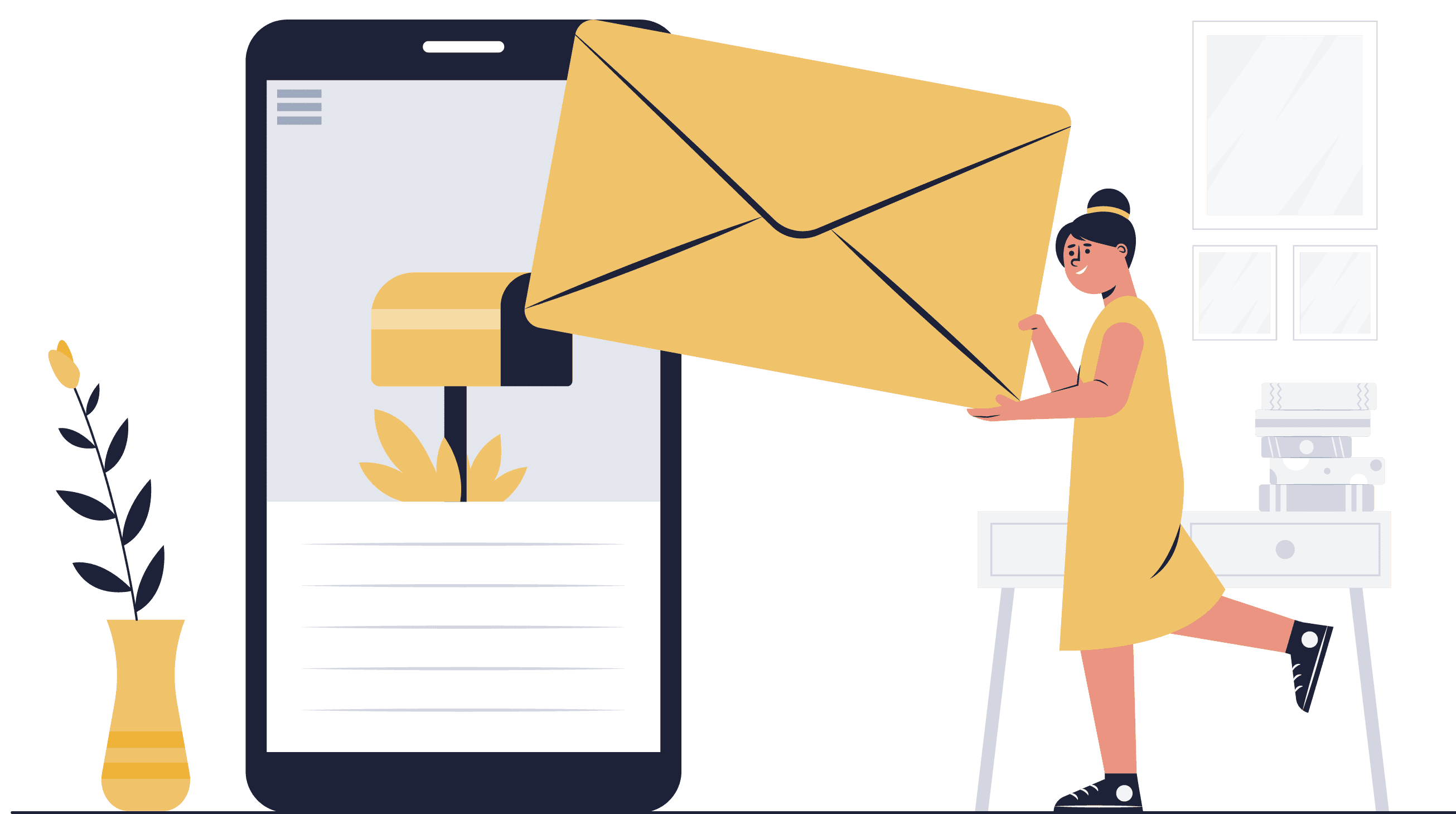The Easiest And Most Effective Ways To Attract Event Participants
You’re championing a cause you’re passionate about. You’ve formed a committee and planned meticulously. Now all you need to do is get lots of people to attend. You’ll definitely want to leverage social media to gain attention and publicity for your event, but there are other highly effective ways to publicize a charity event. Read on to learn more!
Exclusive Bonus: Auction Profit Blueprint™ – Grow your bidding pool. Re-engage bidders who didn’t take home auction items in the past.
Request sponsorship from media outlets
Many media groups will provide free promotion for your event in exchange for sponsor recognition. Offer a deal for the type of exposure you want. You can:
- Guarantee that their logo will be placed on all promotional materials in exchange for an ad
- Make sure they’re present in social media posts when possible
- Include them in all follow-up materials, especially the ones that celebrate reaching your goal and funding your cause
Publicity Gets Attention — Let Your Auction Get Results
You now know how to attract media, press, and buzz. Now convert that buzz into action — launch an auction that gives people a way to support, engage, and bid.
Launch Your Publicity-Fueled AuctionFind a Media Spokesperson
It can be very helpful to designate a media spokesperson to help you achieve your event goals. It’s likely that you have a media specialist or PR person in your volunteer pool already. Ask around and select someone who is:
- Experienced in media relations
- Familiar with your cause
- Has a passion for your event
- Credible and convincing
Once you have someone, devise a multi-pronged approach:
- Arrange interviews with local media and make an appearance on local TV if you can. Morning shows will often support your cause by doing interviews with your spokesperson and showcasing the beneficiaries.
- Leverage local radio stations
- Use your event hashtag wherever you can
- Attend similar events and promote your own
- Use print as well as online promotions
Create and Send Out a Press Release
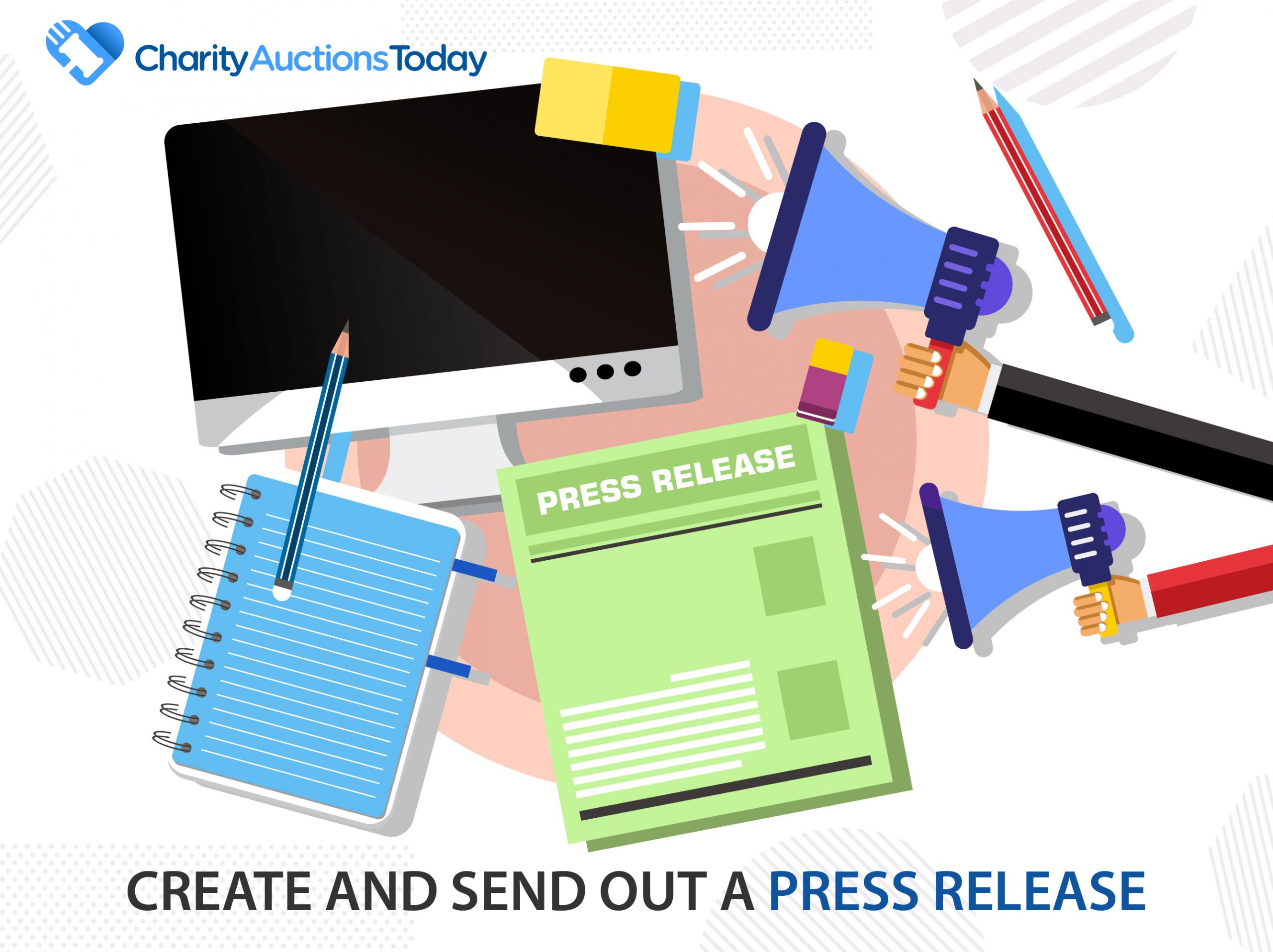
Generate buzz for your event by creating and distributing an effective press release for media outlets. A press release is a detailed account of your event that presents important information in an objective rather than promotional light. It should include your story, some compelling images and even an embedded video. You can submit your press release to local news stations, online newspapers, radio stations and, of course, social media outlets.
Note: Always present a request for media coverage through a formal letter on letterhead and send your press release three weeks to a month in advance of your event date. Send a follow-up email a week before the event if they have yet to promote anything or as a head’s up to remind them to attend.
Set up a Pre-Event Media Gathering
Pre-event affairs are a great way to give coverage to your event before it actually happens. Organize a smaller version of the event and invite the media to cover it. For instance, if the main event is a Halloween function with a pumpkin carving activity, have an early pumpkin carving contest and ask the media to feature the contest. Alternatively, you can create a pre-event zoom media virtual announcement, inviting media to get the full story via zoom before the main event happens. Get your charity event publicized, and you are well on your way to achieving a successful fundraiser!
Frequently Asked Questions
Why does getting publicity for our event matter?
Good publicity boosts attendance, attracts sponsors, and builds credibility. It also creates content you can reuse across email, social, and future sponsor decks.
When should we start PR outreach for an event?
- 4–8 weeks out: confirm story angle, draft press release, build media list.
- 2–3 weeks out: send press release + calendar listings.
- Event week: send media advisory and pitch follow-ups.
- Day-of: on-site media support and real-time content.
How do we choose which outlets and audiences to target?
- Local TV/radio and community papers for broad reach.
- Neighborhood blogs, parent groups, and school newsletters.
- Industry or cause-specific publications and podcasts.
- Partner and sponsor channels with overlapping audiences.
What makes a compelling story angle for media coverage?
Tie your event to a timely hook (seasonal, local impact, human-interest), add strong visuals, and highlight a specific outcome (e.g., “funding 200 backpacks” vs. “raising awareness”).
What should our press release include to get editors’ attention?
- Clear headline with the “why now.”
- Who/what/when/where/why in the first paragraph.
- Two quotes (organizer + beneficiary/sponsor).
- Key details: tickets, link, visuals, media contact, boilerplate.
What’s the difference between a media advisory and a press release?
A press release tells the full story; a media advisory is a short, bulleted invite for reporters with date/time/location, visuals, interview opportunities, and contact info for day-of coverage.
How do we build a media list quickly without pricey tools?
- Collect reporter emails from outlet “Contact/Staff” pages.
- Note beats: community, education, lifestyle, nonprofit.
- Add producers for morning shows and assignment desks.
- Include local bloggers and newsletter editors.
What should our pitch email look like to get opened?
- Subject: ultra-specific & local (e.g., “This Saturday: Students pack 500 care kits in [City]”).
- 2–3 sentence pitch + link to press release and photos.
- Offer interviews and visual moments; include cell number.
Closer: “Happy to hold time for a quick call—what works?”
How often should we follow up without being annoying?
One follow-up 48–72 hours after the first pitch, then a short reminder the week of the event. If no interest, move on and try a different angle or outlet.
Where can we submit free community calendar listings for extra reach?
- Local newspapers, TV/radio calendars, and city websites.
- Chambers of commerce and neighborhood associations.
- Parent groups, school districts, libraries, and faith bulletins.
How do we coordinate social media with our PR push for better results?
Share press hits on social, tag outlets/reporters, and pin the registration link. Use short vertical videos to preview visuals reporters will want to capture.
How can partners, sponsors, and local creators amplify our event publicity?
- Provide a share kit (images, 1–2 captions, links, event hashtag).
- Line up a sponsor-funded match hour and announce jointly.
- Invite micro-influencers to host short reels or live walk-throughs.
What goes in a simple media kit that makes coverage easier?
- Logo files, 3–5 approved photos, and B-roll if possible.
- Fact sheet (who/what/when/where/impact) and key quotes.
- Spokesperson bios and day-of contact info (cell).
How should we prepare our spokesperson for interviews?
- 3 key messages + one data point + one brief story.
- Short answers (10–20 seconds) and bridge back to the mission.
- Practice names, titles, and the event’s call to action.
What on-site logistics help reporters cover the event easily?
- Press check-in with badges, schedule, and shot list.
- Designated interview area and a quiet corner for audio.
- Planned visuals (volunteer actions, big reveal, oversized check).
How do we measure whether our publicity actually worked?
- Number/quality of placements and estimated reach.
- Referral traffic from articles to your event page.
- Registrations/donations during media windows.
- Sponsor satisfaction and new partnership leads.
Any tips for landing a local TV or radio morning show segment?
Pitch a short, visual segment with a hands-on demo or guest beneficiary. Offer 2–3 time options, a concise run-of-show, and a take-home URL/QR for viewers/listeners.
How should we handle tough or sensitive questions from media? (General information)
Prepare a short statement, stick to verified facts, and avoid speculation. If you don’t know, promise to follow up. For legal or policy issues, consult counsel. General information, not legal advice.
What should we do after the event to maximize coverage and goodwill?
- Send a recap with photos, results, and a thank-you quote within 24–48 hours.
- Tag outlets/creators on social and share attendee albums.
- Package results into a sponsor report and next-year teaser.
Do you have a quick publicity checklist we can copy?
- Define angle + visuals + spokesperson.
- Draft press release + media advisory.
- Build media list + submit calendar listings.
- Send targeted pitches; follow up once or twice.
- Prep media kit; confirm day-of logistics and interviews.
- Post-event recap with photos and results.
💡 Try this in ChatGPT
- Summarize the article "How to Promote Your Fundraiser" from https://ghost.charityauctionstoday.com/p/how-to-get-publicity-for-your-event/ in 3 bullet points for a board update.
- Turn the article "How to Promote Your Fundraiser" (https://ghost.charityauctionstoday.com/p/how-to-get-publicity-for-your-event/) into a 60-second talking script with one example and one CTA.
- Extract 5 SEO keywords and 3 internal link ideas from "How to Promote Your Fundraiser": https://ghost.charityauctionstoday.com/p/how-to-get-publicity-for-your-event/.
- Create 3 tweet ideas and a LinkedIn post that expand on this How To topic using the article at https://ghost.charityauctionstoday.com/p/how-to-get-publicity-for-your-event/.
Tip: Paste the whole prompt (with the URL) so the AI can fetch context.
Tom Kelly
Tom Kelly, TEDx speaker and CEO of CharityAuctions.com, helps nonprofits raise millions through auctions and AI. He hosts The Million Dollar Nonprofit podcast and inspires leaders to live their legacy, not just leave it.
Table of contents
Create Your Auction
Raise 40% more with smart bidding tools
